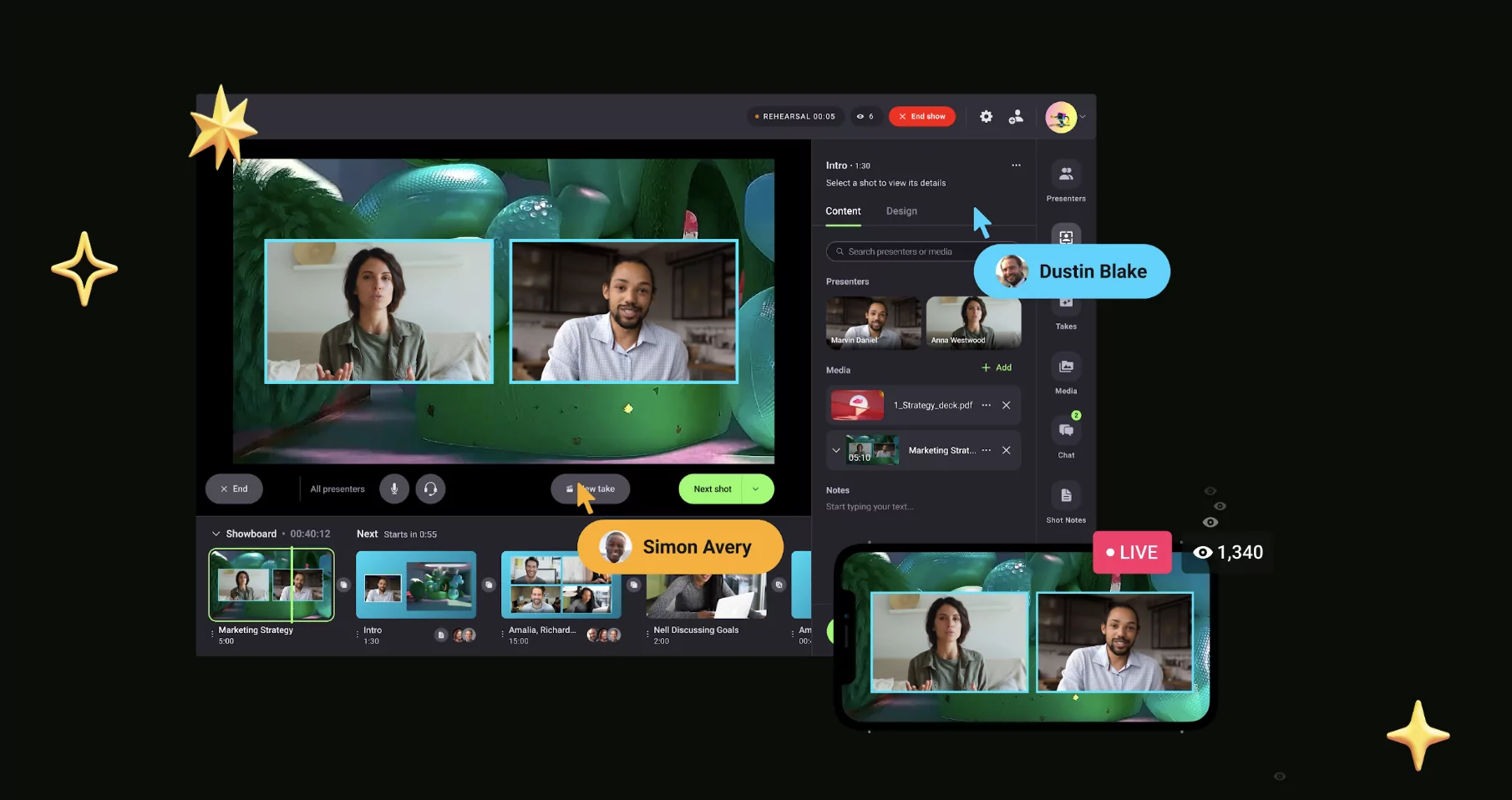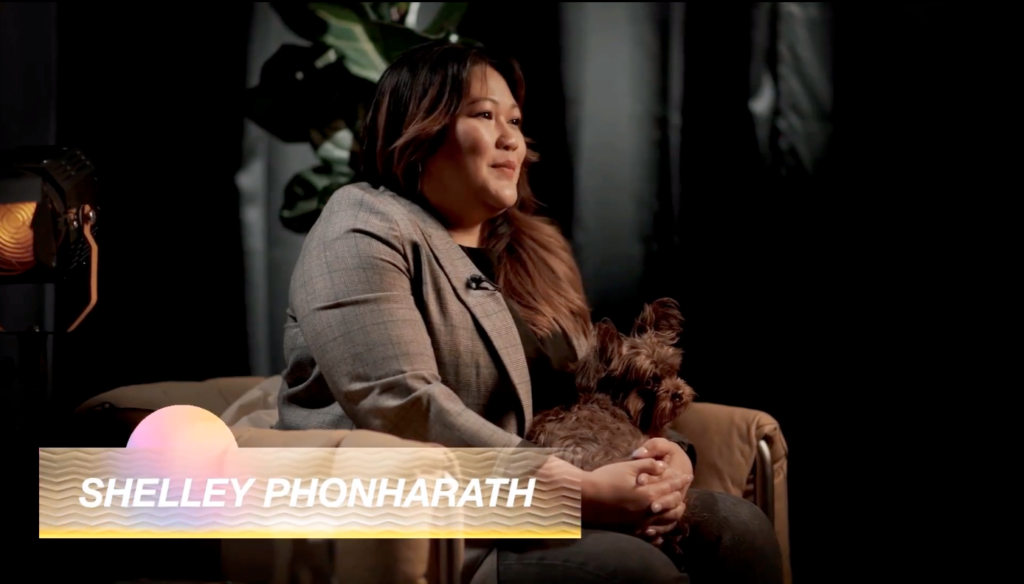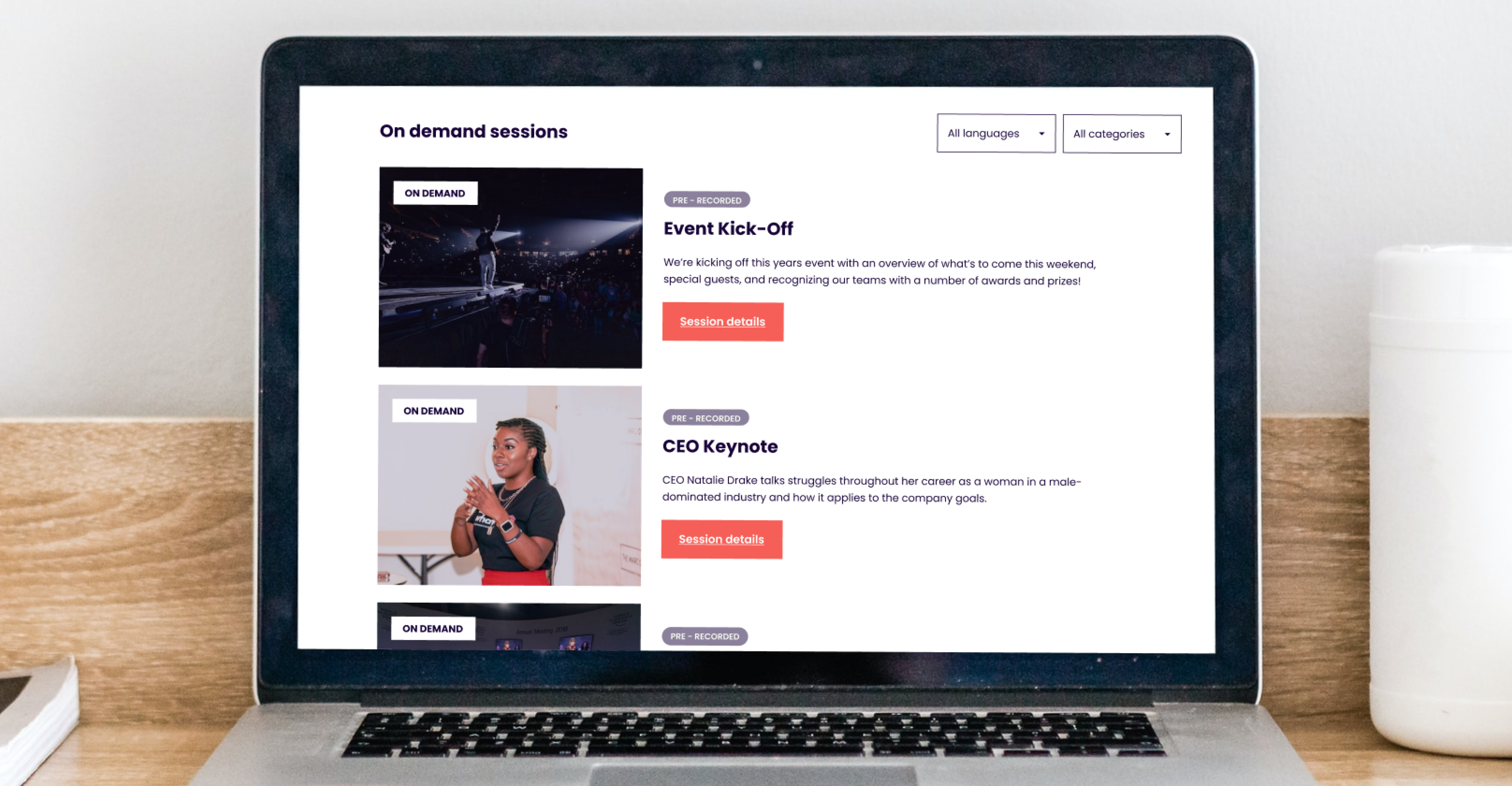
Brandlive’s CEO Discusses How Innovative Event Planners Find Inspiration from Hollywood
Today's innovative event planners are using tricks from Hollywood producers to create memorable experiences online.

When you think about the most iconic shows of today – like SNL, Sportscenter, or any late-night talk show – the dynamic, entertaining content comes to mind. Each section of the show has its own vibe that matches the show’s theme and keeps you tuned in throughout the full experience.
Think “Meanwhile” with Stephen Colbert. The segment offers a natural break from the intro monologue and the show’s interviews. Many such segments are recurring, so much that we come to know and love them. We end up associating them with the show they belong to. Segments (which you can also think of as chapters) are the 5 to 20-minute pieces that make up a full show. These segments create a natural flow and organic variety that’s hidden in the run of show. They can look an infinite number of ways and are the backbone to creating an engaging and attention-holding show – be it on TV or for your own events, webinars, Allhands meetings, conferences and more.
Your show or event is not only competing with endless in-person distractions, but also the latest all-you-can-watch streaming services and addictive blackhole of the internet. This means that your event needs to be just as engaging as what these entertainers are doing on your screens every day.
But how? Using the concept of segments to create the game plan for your event will create a natural flow of content that is worth staying tuned-in for.
The best types of segments are ones that are entertaining and easy to repeat (so you don’t need to reinvent the wheel for every show you produce). This will ensure that you can easily create a successful blueprint for all your shows, with catchy and fun-to-watch segments as the guiding light. Plus, when events become a breeze to plan, producing them regularly won’t be so overwhelming or time consuming.
Looking for inspiration for your next big show? Check out our list of tried and true segments that will get your wheels spinning on how to uplevel your next event.
One of Brandlive’s classic best practices – that we come back to again and again – is to start each show with a video. Whether it’s a well-known music video, clip from a movie, or your own sizzle reel, beginning with a piece of media that ties to your theme will set the tone for your entire event.
And we all know how often people are running a few minutes late for, well, just about everything these days (hey, we’ve all been there). By starting your event with a video that’s a few minutes long, you’ll allow some buffer time for late-comers so they won’t miss any crucial info from the meat of your event.
The variety of new and exciting segments in a show is what keeps things interesting and the energy high. That said, the focus of the meeting – like major leadership changes, a product update, or important panel conversations – is deserving of its own special segment. So, put the biggest spotlight on it by adding a title, overlays, and special music. Pro tip: If you’re showcasing an important guest, be sure the spotlight is solely on them (and not their slideshow).

A growing number of workplaces today are hybrid or primarily remote. This means it’s more important than ever to give your team opportunities to share more about themselves with each other. Sharing stories – and being just a touch vulnerable – strengthens people’s bonds to each other, the work, and their workplace community.
Consider a “Story Time” or personal story share segment to help deepen these important relationships. These segments can be inspired by great storytelling podcasts, like The Moth or This American Life. Even better, if the person’s story ties back to the universal theme of your show, it can make the entire event feel more cohesive and drive your theme home even more.
There’s another important benefit to introducing and connecting different employees and teams within your organization: you never know when folks may need to work with each other on a project or need assistance without ever having met face-to-face. Even just a dash of familiarity will make the partnership and collaboration (usually under a deadline) that much easier.
Everyone loves to hear about a win, especially if it came from a particularly impactful customer or client. Celebrating together reminds us why we do what we do, creates a sense of shared pride for everyone on the team, and gives opportunities to shoutout one another.
Consider a celebratory segment: bring someone (or a few people) onto the virtual stage from various departments to talk about a big, recent deal that closed, or a superstar teammate to talk about a successful project. They can even highlight the collab between clients and their internal teams, emphasizing the importance of working in partnership.
Your meeting or webinar doesn’t need to be all business and no play. When you pepper in fun games, polls, and/or trivia (it could even be about the company!), it keeps people excited, alert, and engaged. And their attention is paramount for when you’re delivering the info you really want them to hear.
Invite people from different teams in your org to participate in play. Some fun segments are Two Truths and a Lie, Would You Rather?, and even a good old-fashioned round of Truth or Dare. You can encourage on-camera engagement from live attendees, or opt to keep it completely in the chat by having a presenter ask trivia questions that the audience can answer with text, gifs and emojis. You could even give out prizes, further encouraging participation and engagement.
If you’re hosting an internal event like an Allhands or a Townhall, you can introduce your new hires to the entire team by bringing them on stage for a little Q&A or an icebreaker like one of the games we mentioned above. Sure, it may be a little nerve-wracking for the new guys, but it’s a great way to welcome them to the team and help them put a face to a name that people may not otherwise see around the office.
Navigation

Today's innovative event planners are using tricks from Hollywood producers to create memorable experiences online.

Understand which strategy you need during your next event so you can increase B2B and B2C audience engagement.

Start building your virtual event run of show with these best practices we’ve developed from producing thousands of events.